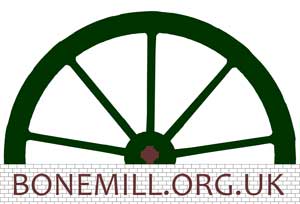On 2/11/2017 a livery button was found by Barry Howard with his metal detector in the grass area behind the railway wagon. Livery Buttons would have been worn on uniforms of servants working for wealthy families, the buttons had the family crest on the front.
The button found has a boars head over a crown, which suggests a high status family. The Boars head is of the ‘erased Scottish’ type, and the crown is the ‘Ducal coronet’ type, also called the ordinary crest coronet.
Several volunteers have searched for the image but have only found slightly different ones, the Scottish Lockhart and Campbell family crests are similar but not the same.
The description of the crest of the Emeris family of Southwood, Norfolk is similar to our button: “Out of a ducal coronet a boars head and neck erased sable, collared.” They were wealthy landowners and included several generations of Rev. John Emeris, one was Lord of the Manor in 1883, so the button may be theirs. The late John Emeris is mentioned on the Norfolk Mills website as he was involved with financing Limpenhoe and Southwood drainage mill, presumably to drain marshland he owned. So far we have not found an image of the Emeris crest.
In the second half of the 18th Century button makers started to put their name on the reverse, known as backmarks which helps date them. The backmark of our button reads: B Doughty 103 St Martins Lane, London. This is Benjamin Doughty, which dates it before 1822 as after this the company was Phipson & Doughty until 1829.
In 1829 a William Lewis is listed living at 103 St Martins Lane, then census records show that in 1846 this was the address of a Canadian Society, in 1851 an Architects Clerk, in 1861 a hotel porter, in 1881 an Army lace manufacturer is listed. in 1892 The Duke of York’s Theatre opened and still stands on the site of 103-106 St Martins Lane.
There were several other button makers at St Martins Lane including Firmin & Sons at Nos. 108-109, and Boggett & Reynolds. Benjamin Doughty was originally from Birmingham as well as having production in London. There were many button makers in Birmingham.
Researched by Jan Foster-Bartlett
Interactive Plan of Mill Recent Finds





















